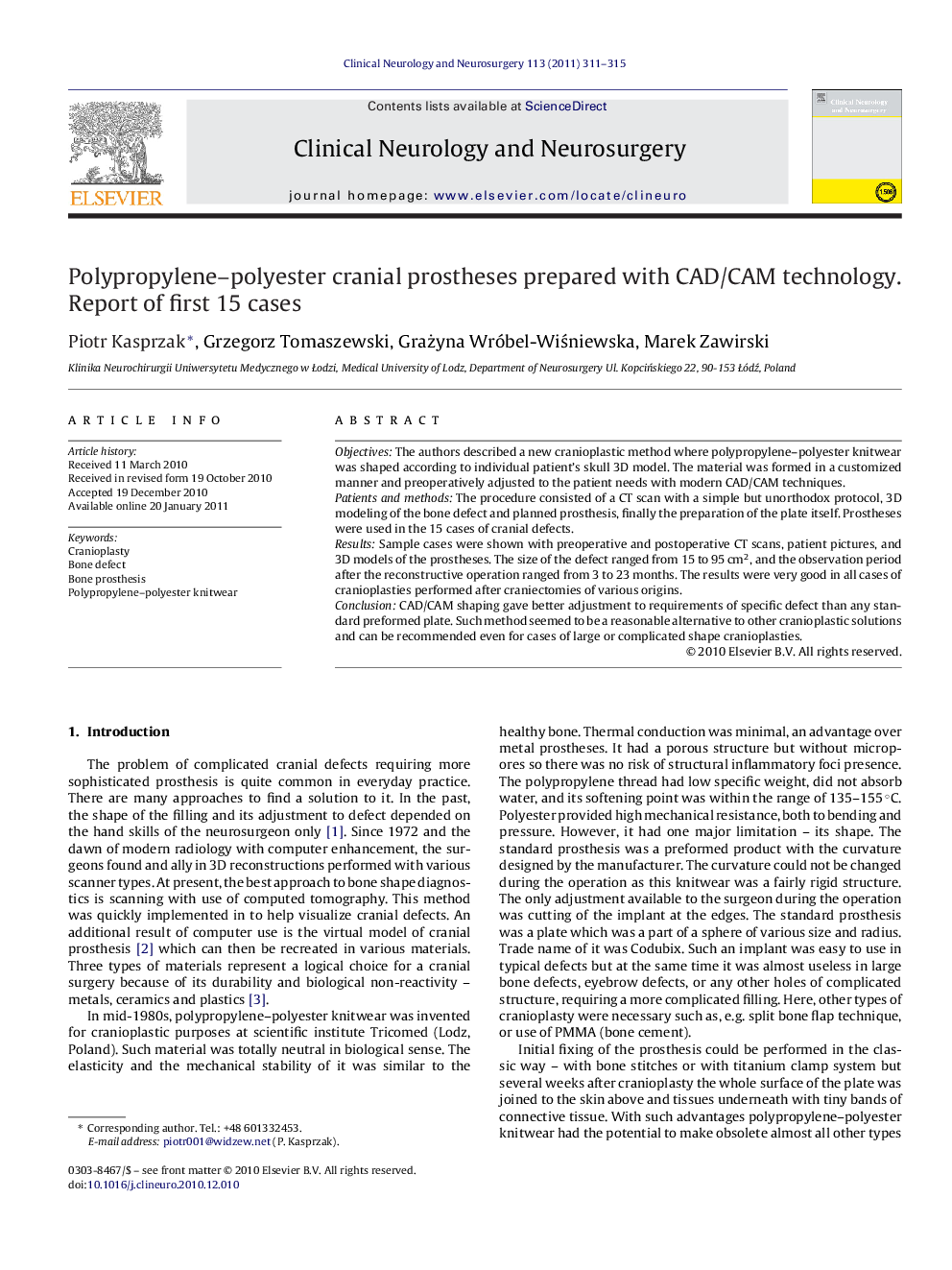| Article ID | Journal | Published Year | Pages | File Type |
|---|---|---|---|---|
| 3041564 | Clinical Neurology and Neurosurgery | 2011 | 5 Pages |
ObjectivesThe authors described a new cranioplastic method where polypropylene–polyester knitwear was shaped according to individual patient's skull 3D model. The material was formed in a customized manner and preoperatively adjusted to the patient needs with modern CAD/CAM techniques.Patients and methodsThe procedure consisted of a CT scan with a simple but unorthodox protocol, 3D modeling of the bone defect and planned prosthesis, finally the preparation of the plate itself. Prostheses were used in the 15 cases of cranial defects.ResultsSample cases were shown with preoperative and postoperative CT scans, patient pictures, and 3D models of the prostheses. The size of the defect ranged from 15 to 95 cm2, and the observation period after the reconstructive operation ranged from 3 to 23 months. The results were very good in all cases of cranioplasties performed after craniectomies of various origins.ConclusionCAD/CAM shaping gave better adjustment to requirements of specific defect than any standard preformed plate. Such method seemed to be a reasonable alternative to other cranioplastic solutions and can be recommended even for cases of large or complicated shape cranioplasties.
